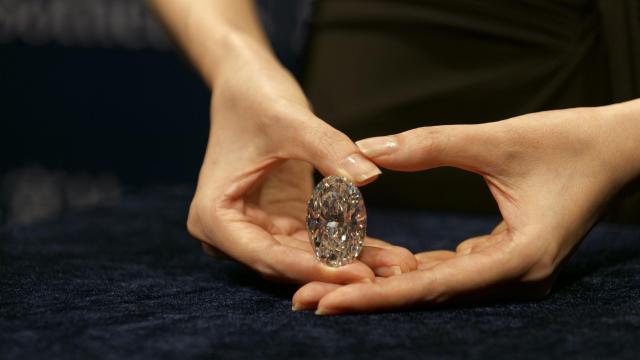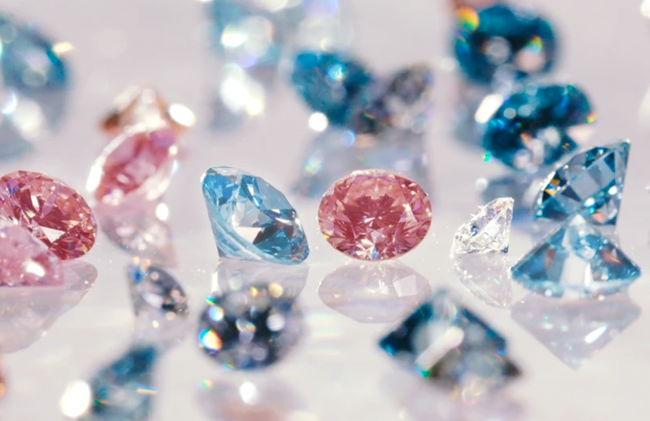
Diamonds have long been revered for their beauty, durability, and cultural significance. However, as the world evolves, so do our perspectives on these precious gems. With the emergence of lab-grown diamonds, a new chapter in the cultural narrative of diamonds has begun. In this article, we’ll explore how cultures around the world perceive lab-grown diamonds and the impact they’re having on traditional views.
1. Introduction
What are lab-grown diamonds?
Lab-grown diamonds, also known as synthetic or cultured diamonds, are created in controlled laboratory environments using advanced technological processes that mimic the natural conditions under which diamonds form in the earth’s crust. These diamonds possess the same chemical composition, physical properties, and optical characteristics as mined diamonds, making them virtually indistinguishable to the naked eye.
Importance of understanding cultural significance
Understanding the cultural significance of diamonds is essential for appreciating the role they play in societies worldwide. Diamonds have symbolized love, purity, wealth, and power for centuries, shaping cultural norms, rituals, and traditions across different civilizations.
2. Cultural Perspectives on Diamonds
2.1 Historical Context
Evolution of diamond symbolism
Throughout history, diamonds have held various symbolic meanings depending on the cultural context. In ancient civilizations such as India, diamonds were associated with divine qualities and spiritual enlightenment. In Europe during the Renaissance, diamonds became synonymous with royalty and nobility, adorning crowns, scepters, and ceremonial regalia.
Diamonds in different cultures
Different cultures have unique customs and beliefs surrounding diamonds. In some cultures, diamonds are exchanged as engagement rings to symbolize eternal love and commitment, while in others, they are used in religious ceremonies or as talismans for protection and prosperity.
2.2 Modern Cultural Significance
Influence on fashion and jewelry trends
In today’s globalized world, diamonds continue to influence fashion and jewelry trends, cultures and lab grown diamonds, reflecting cultural values and personal style preferences. From red carpet events to everyday wear, diamonds remain a symbol of elegance, sophistication, and status.
Cultural rituals and ceremonies
Diamonds play a significant role in cultural rituals and ceremonies, from weddings and anniversaries to milestone celebrations and religious observances. The exchange of diamond jewelry symbolizes enduring bonds, life’s precious moments, and the passing down of family heirlooms from one generation to the next.
3. Ethical and Environmental Considerations
3.1 Traditional Diamond Mining
Impact on communities and environment
The traditional diamond mining industry has faced scrutiny for its social and environmental impacts, including land degradation, deforestation, displacement of indigenous communities, and human rights abuses in some regions where diamonds are mined.
Ethical concerns
Issues such as child labor, worker exploitation, and conflict financing have plagued the diamond industry, prompting calls for greater transparency, accountability, and ethical sourcing practices from consumers and advocacy groups.
3.2 Lab-Grown Diamonds as Ethical Alternatives
Sustainable production methods
Lab-grown diamonds offer a more sustainable alternative to traditional mining practices, as they require significantly less energy, water, and land to produce. Moreover, they are free from the ethical controversies associated with mined diamonds, providing consumers with peace of mind knowing that their purchase supports responsible and ethical manufacturing processes.
Social impact
By choosing lab-grown diamonds, consumers can contribute to positive social impact initiatives, such as community development programs, education initiatives, and environmental conservation efforts, supported by companies committed to corporate social responsibility and ethical business practices.
4. Cultural Acceptance of Lab-Grown Diamonds
4.1 Changing Perspectives
Millennials and Gen Z attitudes
Younger generations, particularly Millennials and Gen Z, are driving the shift towards sustainable and ethical consumption practices, including the preference for lab-grown diamonds over mined ones. Their values of environmental stewardship, social justice, and transparency are reshaping cultural attitudes towards luxury goods and personal adornment.
Shift towards sustainability
As awareness of environmental issues grows and consumers seek more eco-friendly alternatives, lab-grown diamonds are gaining acceptance as a socially responsible choice that aligns with evolving cultural values and ethical considerations.
4.2 Cultural Adoption
Celebrities and influencers promoting lab created diamonds
The endorsement of lab created diamonds by celebrities and influencers has helped to popularize them among mainstream consumers, influencing cultural perceptions and preferences. High-profile figures openly advocating for sustainable and ethical practices in the diamond industry have played a pivotal role in normalizing the use of lab created diamonds in jewelry and fashion.
Acceptance in different regions
While cultural attitudes towards lab created diamonds may vary across regions and demographics, the overall trend towards sustainability and ethical consumerism is driving increased acceptance and adoption of lab-grown diamonds worldwide.
5. Economic Implications
5.1 Market Trends
Growth of lab-grown diamond industry
The lab-grown diamond industry has experienced significant growth in recent years, fueled by rising demand for sustainable and ethically sourced diamonds. Technological advancements and innovations in production methods have made lab-grown diamonds more accessible and affordable to consumers, further driving market expansion.
Impact on traditional diamond market
The growing popularity of lab-grown diamonds has disrupted the traditional diamond market, challenging established norms and business models. Traditional diamond mining companies are facing increased competition and pressure to adapt to changing consumer preferences and market dynamics.
5.2 Accessibility and Affordability
Changing dynamics of diamond purchasing
Lab-grown diamonds offer consumers greater flexibility and choice in terms of quality, size, and price compared to mined diamonds. Their lower cost and ethical appeal make them an attractive option for budget-conscious consumers and those seeking value-aligned purchases.
Economic implications for producing countries
The rise of lab-grown diamonds has economic implications for countries reliant on diamond mining as a source of revenue and employment. While the transition to sustainable alternatives may present challenges for some communities










